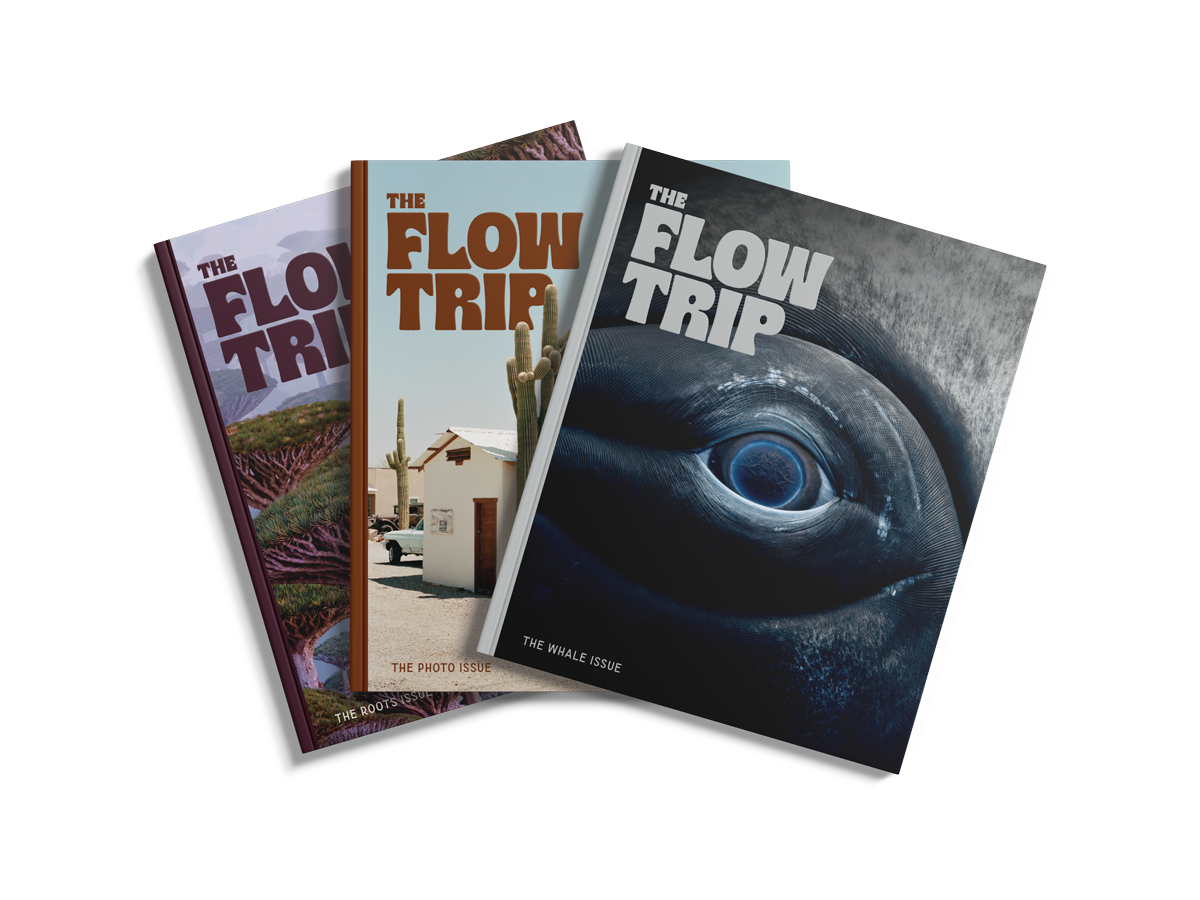Surf It If You Got It
The Flow TripFeature image by Erik Aeder
There’s something to be said about surfers who relentlessly paddle out or jump into crashing waves, who endlessly practice patience, whether it’s waiting for a wave or trying and failing and trying and failing to get to get up or land a new trick, and who risk it all for that euphoric moment of standing up and letting the power of the water propel them. And for most, this is in the ocean. But a lot of humans who aren’t by the coast have gotten pretty creative on how to still surf, regardless of where they are. We paddled out with a few surfers who ride waves in places you wouldn’t likely expect.
Glacial
Yep, glacial. When glaciers calve and fall back into the water, the force results in a glacial tsunami (way smaller than what you’re probably thinking), but nonetheless, apparently ideal for surfing. Wetsuit encouraged.
Garrett McNamara | Pioneer of the World's Biggest Wave (Nazaré, Portugal)

Photo by Bo Bridges
Explain to us what got you into glacial surfing — what led you to want to try this for the first time?
You know, it’s funny what friends will talk friends into doing… a friend of mine, Ryan Casey, told me he had this secret mission. He said, “Don’t tell anybody I sent you a video of the wave.” I saw the wave and I was instantly captivated. A wave generated from water displacement, basically a tidal wave — probably the most dangerous wave in the world. When the ice breaks off, or “calves,” and lands flat, or “bookshelves,” on the river below, it becomes the largest shotgun in the world with ice particles the size of Volkswagen buses flying at you from every direction. But if it calves off and goes straight in, doesn’t fall flat, it can create a perfect wave, so we thought it was a great idea. And it was amazing. It was fun. It was different. It was overwhelming. It was scary. I’ll never do it again.
Why is the community that exists in surfing so important?
The community of surfing is extremely important when you go surfing. You’re in the water. You’re in nature and you connect with nature and you fall in love with nature and you want to protect nature. Surfers usually have a deep respect for the ocean, mother earth, or nature, and are called to protect her. The community we create together can continue to support and raise awareness of the importance of taking care of these places we know, love, admire, and have given us our careers.
River Surfing
If you find the right place where the water is flowing downstream, downhill, and really fast, while the current is back-flowing while crashing forward all at the same time, it’s kind of like a natural wave pool. And therefore, a pretty solid surf spot. It all began in Germany, but now you’ll find people surfing rivers all over the world.
Silvia Mittermüller | Professional Snowboarder
 Photo by Antje Seidel
Photo by Antje Seidel
Explain to us what got you into river surfing — what led you to want to try this for the first time?
The main reason I started river surfing was my origin, my hometown. I am from Munich city, that’s southern Germany and around a 16-hour car drive from reliable "real" ocean waves to surf on. The other reason would be the desire to get into all the boardsports once you fall in love with some of them. I started skateboarding at 13 years of age, got into snowboarding at 14, and of course eventually also wanted to try surfing. Once I joined some older friends and we drove to France together. We could stay only a week and you know how far that gets you in surfing. Enough that you want to learn it, that you catch fire, but nowhere close to be able to actually surf.
When I was home again, one of my friends told me how there are two river waves that are surfable in Munich. A sketchy one, Eisbach, and a more friendly one, Flosslände. It was an idea that got stuck with me from there on. At that time I was already quite established in snowboarding, I was on contract with Santa Cruz for snowboards and one day I asked them if I could please, please also have a surfboard. They sent me one, and that's what I started surfing Flosslände with over 15 years ago. I'd still say that river surfing isn't "real" surfing, it's something different. Just because I can surf in a river doesn't mean I'm capable of doing anything in the ocean. It’s two worlds. But that river surfing world is the best thing many landlocked people can find. Today, through wave pools and artificial perfect standing waves (you often pay for) those two worlds might come a bit closer to each other, but it's still two very different things — surfing with or against the flow of water.
Why is the community that exists in river surfing so important?
Especially in earlier years the community was essential to even get into river surfing. Without a friend showing you the ropes you didn't get into it, figure it out, and get decent at it. By now, the less famous river waves are still a thing that often only locals know about. Spots don't get publicly shared, and if you don't know what river level and flow power makes the wave work, you don't know when to go and how to do it even if the wave runs. You don't know the individual dangers, and there can be some serious dangers in river waves. It's crucial to connect to locals to know this kind of stuff. For Eisbach, maybe these days you also find it online easily, but for any less famous river waves, I’d always try to connect to locals to know what's up. River surfing may be looked down on by "real ocean surfers", but if you want to try it out you should approach it with the same respect as any other non-artificial wave.
Great Lake Surfing
Also known as America’s third coast. And pretty low in temperature, which results in what some call ice cream headaches and frozen hair. And you might not think of lakes having big waves, but head up north and you’ll find swells up to 20 feet.
Victor Bodrie | Great Lakes Surfer

Photo by Zack Griffin
Explain to us what got you into Great Lake surfing — what led you to want to try this for the first time?
Having the itch to surf is like being addicted to drugs, especially here on the Great Lakes. With more coastline than the East and West Coast of America combined, the opportunities are endless. Point breaks, sandy beach breaks, pier wedges, and rock bottom slabs exist. But it’s never consistent and often very short-lived. So when it does happen, it’s special.
We chase storms that create high winds, often creating wave heights and periods of 20 feet at 8 to 9 seconds… SCARY! On top of that, most waves are a minimum of two- to three-hour drive one way, while some are more than 10 hours. When the waves and winds are that rough we have to find shelter behind piers and points. Seeking side shore and offshore winds. The allure of surfing is what got me into Great Lakes surfing; the search is what keeps me going.
Explain why the community that exists in Great Lake surfing is so important.
The Great Lakes surfing community is very important, not only for one another but for our ecosystem. The Great Lakes combined are the largest freshwater source our world has and it faces constant threats. Oftentimes people in the surfing community are its first defense. I know a few surfers who have helped pass new regulations to not only protect our right to surf, but to protect the lakes themselves.
Big Wave
We’re talking really big waves. Like at least 20 feet, but head over to Portugal and you’ll find waves at almost 100 feet. And yes, people are still surfing them.
Paige Alms | Professional Surfer
 Photo by Erik Aeder
Photo by Erik Aeder
Explain to us what got you into big wave surfing — what led you to want to try this for the first time?
I got into surfing big waves through my mentor shaper at the time, Chris Vandervoort, who believed I would be good at it. He took me out for my first outer reef paddle experience when I was 15 and I remember every wave I caught that day. That session changed my life, and I didn’t know it at the time, but surfing big waves would take me all around the world and introduce me to some of my best friends for life. I’m so grateful for the adventures I have been on and continue to have, with an amazing group of friends around me.
Explain why the community that exists in big wave surfing is so important.
The community in big wave surfing is unlike any other, well at least it used to feel like that. It’s grown a lot, but the people I surround myself with, make me feel like it’s one big family. We look out for each other, support each other, can get through hard things together as well as celebrate each other's waves and accomplishments. It takes a team to ride big waves — as much as one wave can be imprinted in the eyes of the world, there were so many people that had a part in making that one wave happen. Having a core team is what it’s all about and it sure is a lot more fun!
. . .
Maybe you’re familiar with big wave surfing, but if you aren’t, you might be wondering how the hell those surfers are able to get into position to surf these massive waves without getting tossed in the washing machine of a 30-foot wave over and over again. The answer is Jet Ski towing. These Jet Ski riders, who are oftentimes surfers as well, tow surfers out into the break, and then pick them up once they are done with their run to make sure they are safe from the power of the crashing swell, while maneuvering through waves the size of buildings. So we hopped on the back of big wave surfer, activist, and entrepreneur Bianca Valenti’s Jet Ski to see what this community is all about.
Bianca Valenti
 Photo by Sachi Cunningham
Photo by Sachi Cunningham
I first got into tow surfing because of my fascination with big waves and the challenges and excitement they offer. Traditional paddling couldn't get me onto those massive waves, but tow surfing made it possible. Jet Ski assistance is vital to big wave surfing as it allows surfers to catch waves that are otherwise unreachable due to their size and speed. Tow surfing opened up a new world for me, where I could push my limits and experience the thrill of dancing with nature's behemoths.
Another reason I got into tow surfing is that Jet Skis are crucial for safety in big wave surfing. They provide the speed and agility needed for quick rescues, making them indispensable during emergencies. Accepting a ride from a rescue ski means you should also know how to operate one. Understanding their mechanics and handling can be the difference between a successful rescue and a dangerous situation. This dual knowledge is another reason I embraced tow surfing, completing the full circle of big wave readiness and ensuring I’m prepared for every scenario at every big swell.
Legacies in Depth
The Flow TripWhat the Water Gave Me
The Flow TripSubscribe to The Flow Trip
- Choosing a selection results in a full page refresh.
- Opens in a new window.



